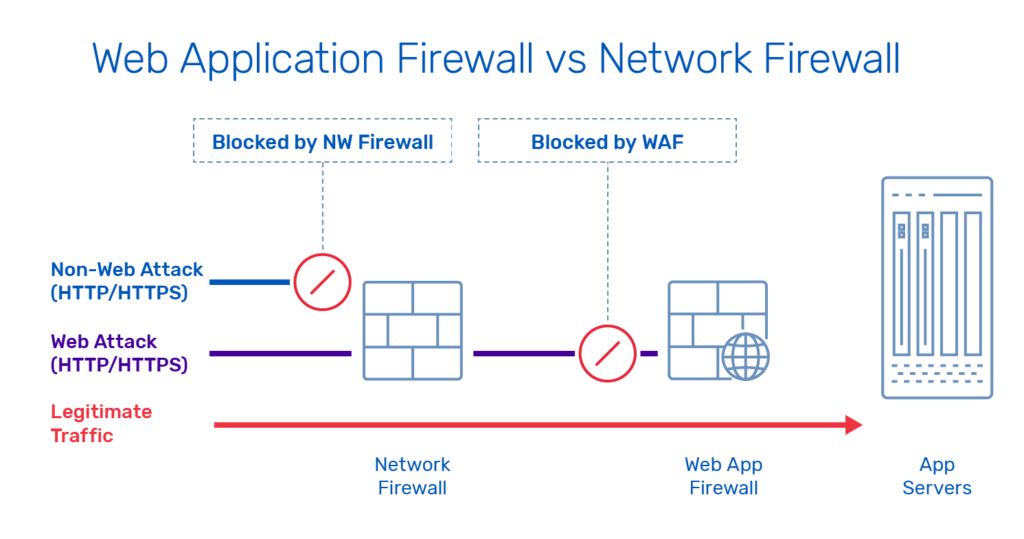A web server handles HTTP requests and responses, while an application server executes dynamic content and business logic. Web servers manage static files, while application servers handle the processing of dynamic content and applications.
Web servers focus on handling incoming requests from clients and delivering the requested content, such as HTML, CSS, and images. In contrast, application servers execute server-side scripts and perform tasks like database querying and transaction processing. The distinctions between web servers and application servers lie in their primary functions and the types of content they handle.
Understanding the differences between the two is crucial for effective web application development and deployment. Web servers and application servers often work together to deliver comprehensive and dynamic web applications efficiently.
Functionality
When it comes to web servers versus application servers, it’s crucial to understand their functionality. A web server primarily handles HTTP requests and serves static content, while an application server processes more complex operations, such as executing business logic and interacting with databases.
This differentiation determines their respective roles in supporting web applications.
Functionality Web servers and application servers play distinct roles in the delivery and processing of web applications. Understanding their unique functions is crucial for optimizing performance. Web Server Functions Web server manages HTTP requests and responses, serving static content like HTML and images efficiently. It handles basic routing and delivers content directly to clients. Application Server Functions The application server executes server-side logic, such as generating dynamic content and processing user input. It provides advanced processing capabilities like database interactions and business logic execution. In summary, web servers focus on serving static content and handling basic requests, while application servers are dedicated to dynamic content generation and complex processing tasks.

Communication
When discussing web servers and application servers, it’s important to understand their distinct roles in communication. Web servers primarily handle HTTP requests and responses, while application servers manage dynamic content and business logic. Both play crucial roles in establishing efficient and secure communication for web applications.
Client-server Communication In Web Server
Client-server communication is a fundamental aspect of web servers, as it allows for the seamless exchange of information between the client (usually a web browser) and the server. When a client interacts with a web server, it sends a request for specific content, such as a webpage or a file. The web server then processes this request and generates a response, which is sent back to the client. This communication follows a standardized protocol known as the Hypertext Transfer Protocol (HTTP). In the context of web servers, the client-server communication primarily revolves around the client sending HTTP requests and the server responding with HTTP responses. These requests can come in various forms, such as GET requests for retrieving data or POST requests for sending data to the server. The HTTP responses include status codes that indicate the success or failure of the request, along with the requested content. This two-way communication enables the seamless delivery of web content from the server to the client.
Client-server Communication In Application Server
While web servers handle the delivery of web content, application servers take client-server communication a step further by providing an environment for running dynamic web applications. In addition to the HTTP protocol used in web servers, application servers may utilize other protocols such as Common Object Request Broker Architecture (CORBA) or Java Message Service (JMS) to facilitate communication between clients and the server. Application servers are responsible for executing web application logic and processing client requests. When a client interacts with an application server, it sends requests that are tailored to invoke specific methods or functionalities within the applications hosted on the server. The application server processes these requests, executes the necessary code, and generates an appropriate response, which is then sent back to the client. The communication between the client and the application server may involve the exchange of structured data in various formats, such as XML or JSON. These data formats allow for the seamless transfer and interpretation of information between the client and server. By enabling such dynamic and interactive communication, application servers empower the creation of robust and feature-rich web applications. In summary, both web servers and application servers facilitate client-server communication in their respective domains. Web servers primarily handle the delivery of web content using the HTTP protocol, while application servers provide a runtime environment for executing dynamic web applications and utilize various protocols for client-server communication. Understanding these differences helps in choosing the appropriate server technology for specific web development needs.
Performance
Performance is a critical factor when choosing between web servers and application servers. The right choice can significantly impact the speed and efficiency of your web applications. Let’s explore the performance aspects of web servers and application servers in the context of scalability.
Scalability In Web Servers
Web servers are designed to handle a large number of concurrent connections and deliver web pages and static content efficiently. They excel in handling high traffic by swiftly responding to HTTP requests from clients. When a web server receives a request, it processes it and transmits the corresponding web page or files to the client. Commonly used web servers such as Apache and Nginx are known for their ability to scale horizontally. They can be deployed in load-balanced clusters to distribute traffic across multiple servers, ensuring reliable performance even during peak loads.
Scalability In Application Servers
Application servers, on the other hand, are designed to execute and process dynamic code and business logic for web applications. They are capable of handling complex operations involving database access, transaction management, and resource-heavy computations. Java EE, Node.js, and Tomcat are popular choices for building highly scalable application server environments. These servers can scale vertically, by increasing the hardware resources like CPU and memory, or horizontally, by deploying multiple instances across different machines. This enables them to efficiently handle increasing workloads and provide seamless user experiences.

Resource Handling
When it comes to web and application servers, how they handle resources is a crucial aspect. Let’s delve into the differences in resource handling between web servers and application servers.
Static Resource Handling In Web Servers
Web servers excel at serving static resources like HTML, CSS, and images directly to clients.
- Efficiently deliver pre-existing content.
- Optimized for fast retrieval of fixed data.
Dynamic Resource Handling In Application Servers
Application servers are adept at managing dynamic content such as databases, server-side scripts, and API calls.
- Process real-time data requests.
- Execute dynamic operations based on user input.
By understanding these distinctions, you can optimize resource handling based on the requirements of your project.
Deployment
Deployment of web and application servers plays a crucial role in the efficient functioning of websites and web applications. It determines how the server software and applications are installed, configured, and managed.
Deployment Scenarios For Web Server
Web servers are primarily designed to handle HTTP requests from clients and respond with HTML pages. They are commonly used for hosting websites and serving static content. Below are some deployment scenarios for web servers:
- Shared Hosting: In this scenario, multiple websites are hosted on a single server. Each website has its own domain name but shares server resources with other sites.
- Dedicated Hosting: With dedicated hosting, a single server is allocated to a specific website. This provides enhanced security, performance, and flexibility for resource allocation.
- Load Balancing: To handle high traffic volumes, load balancing is used to distribute the requests across multiple web servers. This ensures that each server can handle a portion of the workload, improving performance and reducing downtime.
- Proxy Server: Web servers can also be used as proxy servers to cache and serve content on behalf of other servers. This helps in reducing the load on the backend servers and improving overall performance.
- Content Delivery Network (CDN): CDNs consist of a network of servers located in different geographic locations. They serve cached content to users based on their location, reducing latency and improving website performance.
Deployment Scenarios For Application Server
Application servers are used for hosting applications that require more complex processing than serving static web pages. They provide an environment for running dynamic applications and support various programming languages. Below are some common deployment scenarios for application servers:
- Enterprise Applications: Application servers are commonly used for hosting large-scale enterprise applications. These applications often require distributed deployment across multiple servers to handle the complexity and scale of the application.
- Microservices Architecture: Application servers are ideal for implementing microservices architecture, where individual components of an application are deployed independently and communicate with each other through APIs.
- Cloud Deployment: Application servers can be deployed on cloud platforms, allowing for easy scalability and automatic resource allocation based on demand. This provides flexibility and reduces infrastructure costs.
- Containerized Deployment: With the rise of containerization technologies like Docker, application servers can be packaged as containers and deployed in container orchestrators like Kubernetes. This simplifies deployment and improves scalability.
Examples
Popular Web Servers
Apache and Nginx are the most commonly used web servers.
Apache is known for its stability and power while Nginx is favored for its fast and lightweight nature.
Popular Application Servers
Tomcat and JBoss are among the widely used application servers.
Tomcat is popular for serving JavaServer Pages, while JBoss is known for its Java EE support.

Frequently Asked Questions Of Web Server Vs. Application Server
What Is Difference Between Application Server And Web Server?
An application server enables running applications, while a web server receives requests and serves web pages. The former handles dynamic content and business logic, while the latter handles static content.
Is Tomcat A Web Server Or Application Server?
Tomcat is primarily an application server, although it can also function as a web server.
What Is The Difference Between A Web Server And A Http Server?
A web server delivers web content, while an HTTP server handles website communication. Web servers host websites, and HTTP servers manage data transfer.
Is Nginx A Web Server Or Application Server?
NGINX is a web server, not an application server. It’s designed to handle web traffic efficiently.
Conclusion
To summarize, understanding the differences between a web server and an application server is crucial for building and deploying robust web applications. While a web server focuses on handling HTTP requests and delivering static content, an application server is designed to execute dynamic code and handle complex business logic.
By recognizing their unique functions and capabilities, developers can make informed decisions when choosing the right server for their specific needs. So, whether you’re a web developer or an application developer, familiarizing yourself with these concepts will help you optimize your applications and deliver exceptional user experiences.



